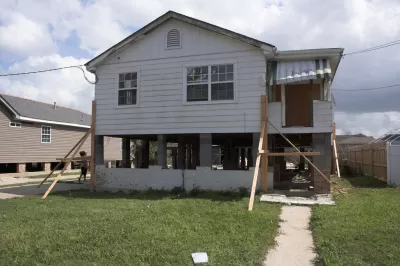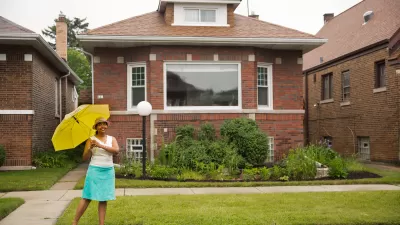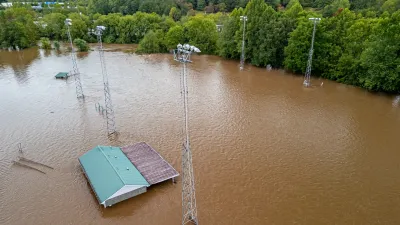New research shows that modern building codes have prevented around $27 billion in damage from natural disasters between 2000 and 2016, yet many cities still operate under decades-old regulations.

To adapt to the effects of rising sea levels, increasingly destructive wildfires, and longer storm seasons, many local governments have implemented updated building codes that recognize the realities of climate change and adapt building requirements to more adequately prepare for future disasters. These codes, which include increased elevation for houses in flood zones, wind-resistant roofs, and earthquake-safe construction requirements, save homes and businesses from billions of dollars in damage and make communities more resistant to the ravages of natural disasters. Yet recent research published by the Federal Emergency Management Agency(FEMA) shows that more than a third of new construction in the United States is happening in places with building guidelines that are more than 20 years old—or that have none at all.
While climate change arguments tend to get bogged down in partisan debates, agencies like FEMA have created "resiliency" initiatives as a way to garner bipartisan support for projects that boost infrastructure spending for weather-proofing homes and limiting damage from natural disasters. FEMA's Building Resilient Infrastructure and Communities program provides grant funding to local governments that want to update their building codes or strengthen enforcement of existing regulations. If implemented nationwide, FEMA estimates that updated building codes could accumulate up to $132 billion in avoided property losses by 2040.
FULL STORY: Updated Building Codes Prevent Billions in Disaster Damages. Many Localities Don’t Have Them in Place.

Planetizen Federal Action Tracker
A weekly monitor of how Trump’s orders and actions are impacting planners and planning in America.

Congressman Proposes Bill to Rename DC Metro “Trump Train”
The Make Autorail Great Again Act would withhold federal funding to the system until the Washington Metropolitan Area Transit Authority (WMATA), rebrands as the Washington Metropolitan Authority for Greater Access (WMAGA).

DARTSpace Platform Streamlines Dallas TOD Application Process
The Dallas transit agency hopes a shorter permitting timeline will boost transit-oriented development around rail stations.

Renters Now Outnumber Homeowners in Over 200 US Suburbs
High housing costs in city centers and the new-found flexibility offered by remote work are pushing more renters to suburban areas.

The Tiny, Adorable $7,000 Car Turning Japan Onto EVs
The single seat Mibot charges from a regular plug as quickly as an iPad, and is about half the price of an average EV.

Supreme Court Ruling in Pipeline Case Guts Federal Environmental Law
The decision limits the scope of a federal law that mandates extensive environmental impact reviews of energy, infrastructure, and transportation projects.
Urban Design for Planners 1: Software Tools
This six-course series explores essential urban design concepts using open source software and equips planners with the tools they need to participate fully in the urban design process.
Planning for Universal Design
Learn the tools for implementing Universal Design in planning regulations.
Roanoke Valley-Alleghany Regional Commission
City of Mt Shasta
City of Camden Redevelopment Agency
City of Astoria
Transportation Research & Education Center (TREC) at Portland State University
US High Speed Rail Association
City of Camden Redevelopment Agency
Municipality of Princeton (NJ)





























